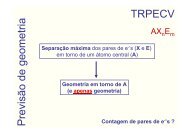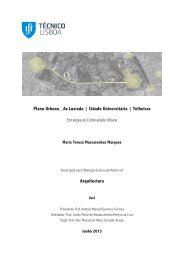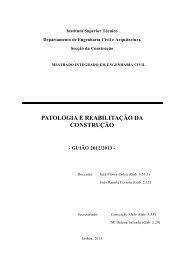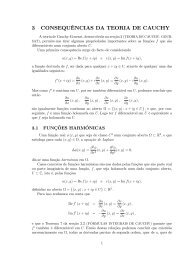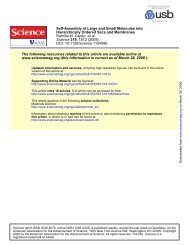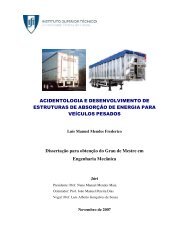dissertacao.pdf
dissertacao.pdf
dissertacao.pdf
Create successful ePaper yourself
Turn your PDF publications into a flip-book with our unique Google optimized e-Paper software.
messages, Alice and Bob needed a secure channel (that is, a channel to send<br />
messages without the risk of Marvin intercepting any message) to exchange the<br />
secret key. But suppose now that Alice and Bob never met, will never have<br />
the chance to meet, and have at their disposition only an insecure channel to<br />
exchange messages. Can they exchange encrypted messages between them, with<br />
Marvin knowing all these cypher texts but without being able to decrypt them?<br />
Until we got to 1976, this question seemed to have no answer. It was then<br />
that Diffie and Hellman, predicting a coming revolution in cryptography[13],<br />
proposed a new concept of cryptosystem which would lead to the creation of<br />
RSA.<br />
1.2 Public Key Cryptography<br />
Public key cryptography consists in cryptosystems where there is no need for a<br />
secure channel to exchange any prior information, like the secret key used by<br />
private key cryptosystems. A common analogy to explain the concept of public<br />
key cryptography is that of a simple mailbox. Everyone can put a letter in<br />
Alice’s mailbox but only Alice, who has the key for her mailbox, can open it<br />
and read her letters. The same is true for Bob and his mailbox. In a technical<br />
way, this can be described as follows: Alice creates a pair of public and private<br />
keys. Then she reveals her public key, allowing anyone to encrypt messages with<br />
this key and send them to her. When receiving them, she decrypts them using<br />
her private key. To clear any doubts, should Bob wish to receive encrypted<br />
messages he should also create a pair of public/private keys and follow Alice’s<br />
procedure.<br />
This way, there is no need for a safe channel to agree on a key, as there<br />
are no common keys which need to be changed between the several users. The<br />
conditions such a cryptosystem should satisfy, which were initially proposed by<br />
Diffie and Hellman in 1976, are presented below:<br />
2



